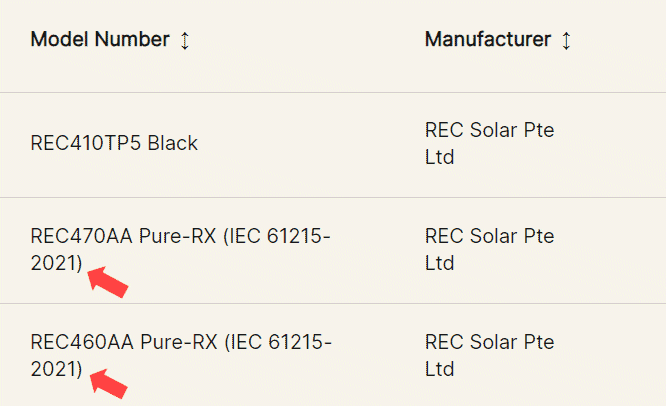A bunch of solar panels will soon disappear off the Clean Energy Council’s approved solar panels list – here’s what’s happening and what it means.
The Clean Energy Council (CEC) maintains a list of solar panels meeting Australian Standards. To be eligible for Australia’s solar panel rebate and some state incentives, a system must use panels (and inverter/s) that are on the list at the time the system is installed. Additionally, some Distributed Network Service Providers (DNSPs) may not permit unlisted solar panels to be grid-connected.
As solar technology evolves, so do standards to ensure quality and safety are maintained and enhanced. Back in 2021, a standard relating to solar panels was updated by the International Electrotechnical Commission (IEC); an international standards organization that creates standards for electrical, electronic and related technologies.
Subsequently, Australian Standard AS5033:2021 (Installation and safety requirements for photovoltaic (PV) arrays)1 was published in November 2021, which contains requirements for modules to meet IEC 61215-1:2021 (and IEC 61730-1:2016).
The CEC then updated requirements for approved PV modules in 2023. The Australian solar industry has had more than a year’s notice of the change – and crunch time is coming.
Which Solar Panel Listings Are Expiring?
Listings with expiry dates of:
- 30 September 2024 or earlier
- 31 March 2025 (these were given an extension)
… are currently not certified to 2021 standards and will not be considered approved nor eligible for Small-scale Technology Certificates (STCs) after these dates. STCs are the virtual bits of paper the solar rebate is based on. Listings with expiries later than 31 March 2025 are approved after the deadlines. These also have a suffix of IEC 61215-2021 after the model number; for example:
The CEC says the product nameplate label can also be checked for which version of IEC 61215 the PV modules are certified to.
“We encourage all installers and retailers to use up existing stock that is set to expire and to buy stock that is approved to 2021 standards,” states the CEC.
As at yesterday, the CEC’s approved modules list contained 5,212 products from 112 manufacturers. How many of those will no longer be approved after the dates mentioned I found hard to tell given the way the list is presented2, but a quick browse indicates it should wind up significantly leaner.
It’s likely many affected modules are no longer available in Australia. But for those that are, some may remain on the list if manufacturers get panels certified to the 2021 version of IEC 61215 and have documentation submitted to the CEC before 1 October 2024.
How Does This Affect Solar Panel Owners?
For owners of “expiring” solar panels, there’s nothing to be concerned about. The panels won’t suddenly stop working and warranty arrangements won’t change as a result of this. It will be business as usual on these rooftops.
For those getting a solar power system installed after the deadline, if you’re feeling particularly vigilant you can check the panels’ nameplates as described above before they go on your roof. But you shouldn’t need to as this is the installer/retailer’s responsibility, and it’s in their interests to ensure they do. Still, it doesn’t hurt to check, even if just to confirm the solar panels being installed are the ones you signed up for.
Thinking of going solar? Discover what you need to know about buying solar panels, and see brands SolarQuotes and some of Australia’s top installers currently recommend.
Footnotes
- It’s frustrating that in order to get a copy of the standard, you have to pay $280 for the privilege – but that’s another story. ↩
- The CEC website was upgraded last night – and it seems the listing table has a few gremlins. ↩



 RSS - Posts
RSS - Posts



Speak Your Mind